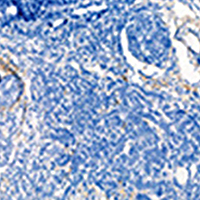 Smart Citations
Smart CitationsSee how this article has been cited at scite.ai
scite shows how a scientific paper has been cited by providing the context of the citation, a classification describing whether it supports, mentions, or contrasts the cited claim, and a label indicating in which section the citation was made.
Aberrant expression of CCDC69 in breast cancer and its clinicopathologic significance
Coiled-coil domain-containing protein 69 (CCDC69) is a novel gene and limited knowledge in known in breast cancer. In the present study, we aimed to explore the relationship between CCDC69 and breast cancer, demonstrate the clinicopathological significance and prognostic role of CCDC69 in breast cancer, and analyze the possible mechanism of CCDC69 affecting the prognosis of breast cancer. First, from GEO database, TIMER, GEPIA, and OncoLnc, we select CCDC69 as the potential gene which closely involved in breast cancer progression. Next, by real-time PCR detection, the expression of CCDC69 in breast cancer tissue was notably lower than that in normal breast tissues (p=0.0002). In addition, our immunohistochemistry (IHC) indicated that the positive expression rate of CCDC69 in the triple-negative breast cancer (TNBC) was lower than that in the non-TNBC (p=0.0362), and it was negatively correlated with the expression of Ki67 (p=0.001). Further enrichment analysis of CCDC69 and the similar genes performed on FunRich3.1.3 revealed that these genes were significantly associated with fat differentiation, and most of them were related to peroxisome proliferator-activated receptor (PPAR) signal pathway. Collectively, our findings suggest that CCDC69 is down regulated in breast cancer tissue especially in TNBC which has higher malignant grade and poorer clinical prognosis.
Downloads
Publication Facts
Reviewer profiles N/A
Author statements
- Academic society
- N/A
- Publisher
- PAGEPress Publications, Pavia, Italy
How to Cite
PAGEPress has chosen to apply the Creative Commons Attribution NonCommercial 4.0 International License (CC BY-NC 4.0) to all manuscripts to be published.

 https://doi.org/10.4081/ejh.2021.3207
https://doi.org/10.4081/ejh.2021.3207






